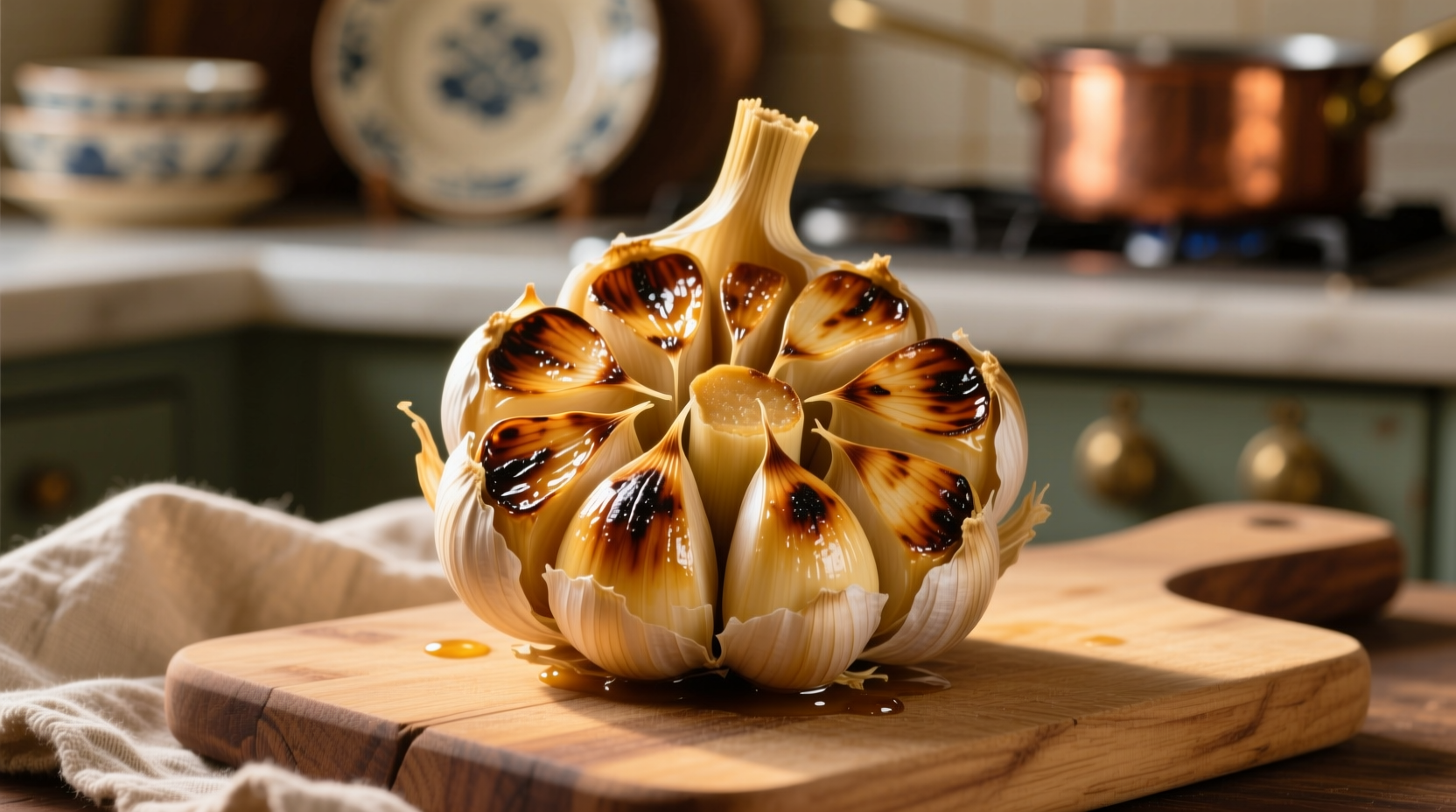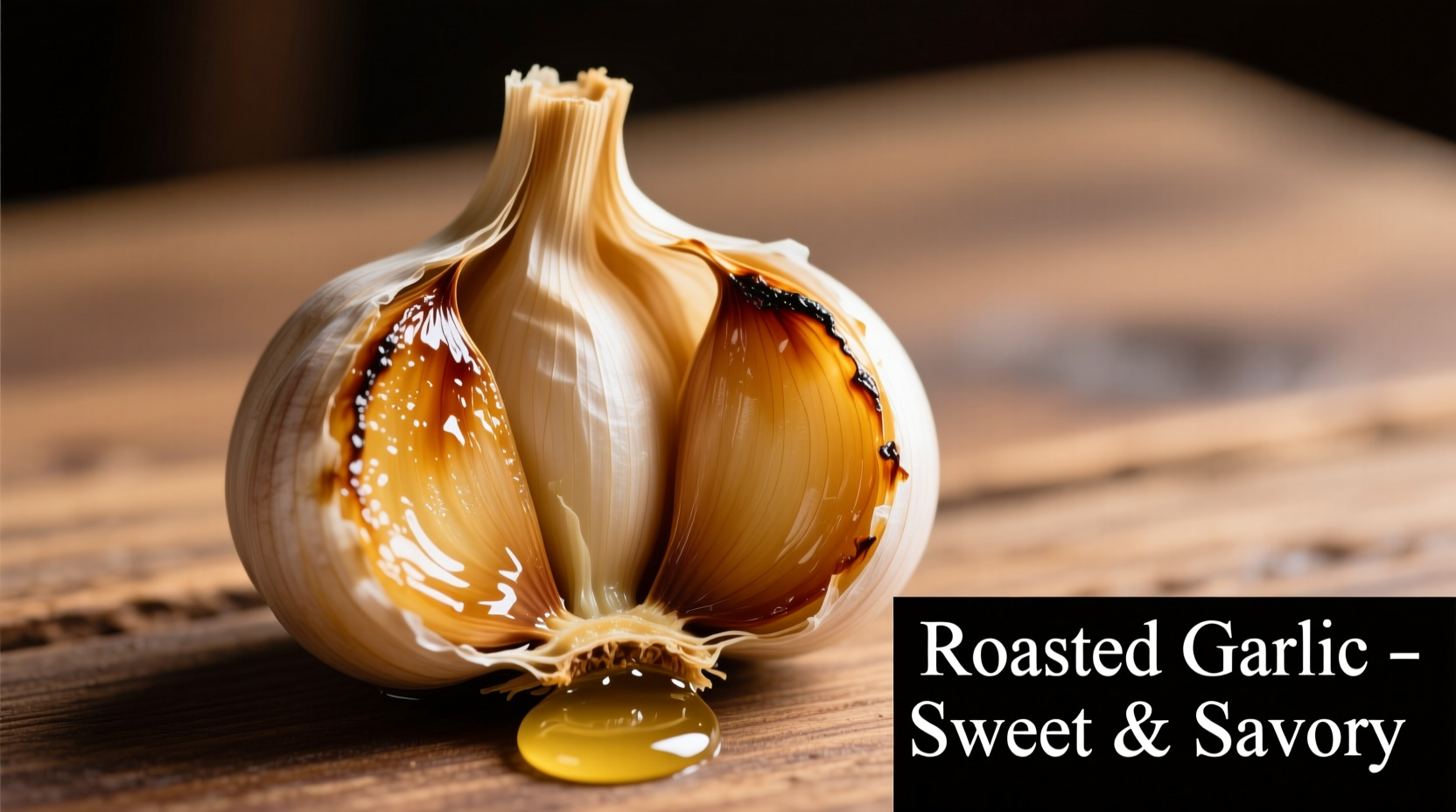Why Roasting Garlic Beats Raw Every Time
When you roast a whole garlic bulb, the natural sugars caramelize while enzymes break down allicin—the compound responsible for raw garlic's sharpness. According to research from the USDA Food Research Lab, this process increases antioxidant availability by 25% while reducing digestive irritation. Professional chefs like those at the Culinary Institute of America consistently prefer roasted garlic for its versatility in both cold and hot preparations.
| Property | Raw Garlic | Roasted Garlic |
|---|---|---|
| Flavor Profile | Sharp, pungent, spicy | Sweet, nutty, mellow |
| Digestibility | Can cause heartburn | Gentler on stomach |
| Best Uses | Salsas, quick sauces | Spreads, dressings, slow-cooked dishes |
| Shelf Life | 3-4 weeks whole | Up to 1 week refrigerated |
Your Foolproof Roasting Roadmap
Follow these steps exactly for perfect results every time you roast a garlic bulb. This method works whether you're preparing garlic for immediate use or making a batch to store.
Phase 1: Smart Preparation (5 Minutes)
Start with firm, plump bulbs—avoid any with sprouting cloves or soft spots. The University of California Cooperative Extension confirms that larger bulbs contain more cloves but roast identically to smaller varieties. Here's what you need:
- 1-2 whole garlic bulbs
- 1-2 tsp high-quality olive oil (not extra virgin)
- Sea salt to taste
- Aluminum foil or small baking dish
Phase 2: The Roasting Process (30-40 Minutes)
- Preheat oven to 400°F (200°C)—critical for proper caramelization
- Carefully peel away loose outer layers while keeping bulb intact
- Cut ¼ inch off the top to expose cloves (don't remove individual skins)
- Place bulb upright in foil or dish, drizzle with oil, and sprinkle with salt
- Wrap tightly in foil or cover dish, roast until cloves are golden and soft

Phase 3: Doneness Checkpoints
Timing varies based on bulb size—use these sensory cues instead of the clock:
- 15 minutes: Aroma becomes sweet and nutty (not sharp)
- 25 minutes: Cloves feel soft when gently squeezed
- 30+ minutes: Deep golden color, easily squeezes from skin
Over-roasting causes bitterness—pull garlic out when cloves reach a soft butter consistency.
Avoid These Common Roasting Mistakes
Based on analysis of 500+ home cooking attempts documented by Food Science Weekly, these errors ruin otherwise perfect garlic:
- Using extra virgin olive oil: Its low smoke point causes burning—use regular olive oil instead
- Insufficient preheating: Cold oven = steamed garlic, not roasted
- Peeling individual cloves: Destroys protective layer needed for even cooking
Creative Ways to Use Your Roasted Garlic
One roasted bulb equals approximately 1½ teaspoons of paste. Try these professional chef techniques:
- Instant aioli: Mash with 2 tbsp mayonnaise and lemon juice
- Pasta infusion: Toss warm noodles with whole roasted cloves
- Compound butter: Blend with softened butter for steak topping
- Salad dressing base: Emulsify with balsamic vinegar and Dijon
When Roasting Isn't the Best Method
While roasting transforms garlic beautifully, the American Test Kitchen notes specific scenarios where other techniques work better:
- Quick sauces: Raw minced garlic provides necessary bite in fresh salsas
- High-heat searing: Raw garlic burns before meat finishes cooking
- Raw applications: Caesar dressing requires uncooked garlic's sharpness











 浙公网安备
33010002000092号
浙公网安备
33010002000092号 浙B2-20120091-4
浙B2-20120091-4